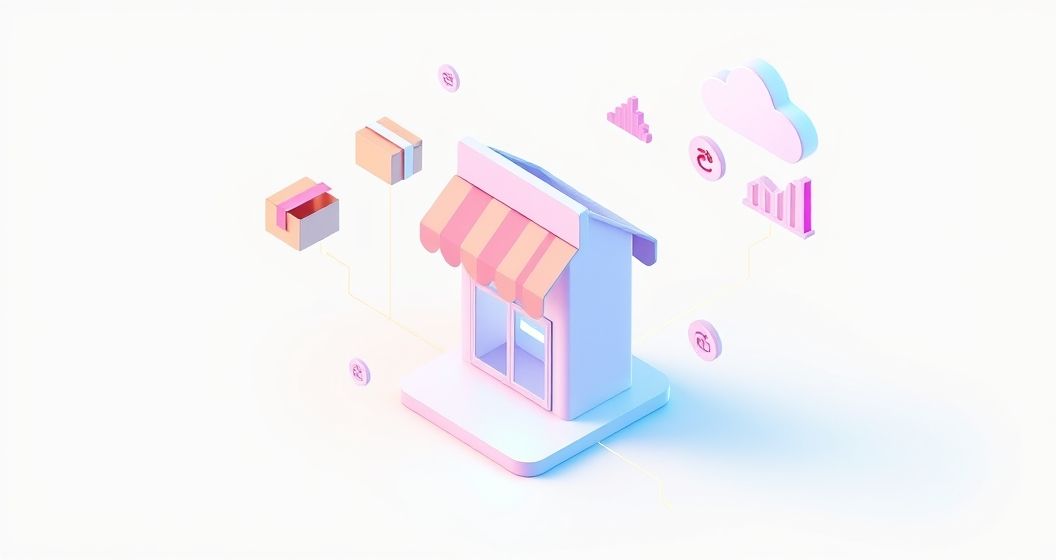In the dynamic world of online retail, managing an Etsy shop efficiently requires more than just creating beautiful products. Many sellers seek ways to streamline their operations, automate tedious tasks, and expand their reach beyond the basic platform functionalities. This is precisely where Etsy integrations become indispensable, transforming how you manage inventory, process orders, handle shipping, and engage with your customers. Understanding these powerful tools is crucial for any seller aiming for growth and sustainable success in a competitive marketplace.
What Are Etsy Integrations for Online Sellers?
Etsy integrations refer to the process of connecting your Etsy shop with external software, applications, or platforms. These connections allow data to flow seamlessly between different systems, eliminating manual data entry and reducing the potential for errors. Such integrations extend Etsy’s inherent capabilities, enabling sellers to manage various aspects of their business—from back-end logistics to front-end marketing efforts—through a unified ecosystem. They are designed to enhance operational efficiency and improve the overall seller experience.
These powerful tools act as bridges, linking your Etsy store to specialized solutions for accounting, inventory management, shipping, customer relationship management (CRM), and more. The primary goal of implementing Etsy integrations is to automate routine tasks, free up valuable time for product creation and marketing, and ultimately foster business growth. By connecting diverse platforms, sellers can create a robust, interconnected system that supports their unique operational needs and scaling ambitions effectively.
Core Advantages of Integrating Your Etsy Shop
Integrating your Etsy shop brings a multitude of benefits, starting with significantly enhanced operational efficiency. By automating repetitive tasks such as order processing, inventory updates, and shipping label generation, sellers can save countless hours each week. This automation minimizes the risk of human error, ensuring greater accuracy in your records and customer communications. The time saved can then be redirected towards product development, marketing initiatives, or other high-value activities that directly contribute to business expansion.
Furthermore, Etsy integrations provide invaluable data accuracy and deeper business insights. When different systems communicate seamlessly, your inventory levels, sales figures, and customer information are consistently updated across all platforms. This unified data source allows for more precise financial reporting, better demand forecasting, and a clearer understanding of your customers’ purchasing patterns. Access to reliable, real-time data empowers sellers to make informed strategic decisions regarding pricing, product offerings, and marketing campaigns.
Finally, adopting strategic Etsy integrations is crucial for scalability and sustained growth. As your business expands, managing an increasing volume of orders and inventory manually becomes unsustainable. Integrations provide the infrastructure needed to handle higher sales volumes without proportional increases in workload, allowing you to scale your operations smoothly. They enable you to explore new sales channels, manage multiple storefronts, and expand your product lines with greater ease, positioning your Etsy business for long-term success and broader market reach.
Essential Categories of Etsy Integrations for Sellers
Streamlining Inventory and Order Management
Inventory and order management integrations are vital for any growing Etsy store, providing a centralized system to track products across various sales channels. These solutions automatically update stock levels as sales occur, preventing overselling and ensuring accurate inventory counts. They also consolidate orders from Etsy and other platforms into a single dashboard, simplifying processing and fulfillment workflows. This comprehensive overview ensures that every order is handled promptly and correctly, enhancing customer satisfaction.
Popular examples of inventory and order management Etsy integrations include platforms like Sellbrite, eSwap, and Veeqo. These tools offer features such as multi-channel listing management, automated stock synchronization, and bulk order processing. By integrating these systems, sellers can efficiently manage hundreds or thousands of SKUs, track product variations, and gain insights into their best-selling items. This level of organization is critical for maintaining efficiency and profitability, especially during peak sales seasons.
Optimizing Shipping and Fulfillment Processes
Shipping and fulfillment integrations are designed to simplify the complex process of getting products from your workshop to your customers’ doors. These tools automatically import order details from Etsy, generate shipping labels, calculate postage costs, and provide tracking information. Many platforms offer discounted shipping rates through partnerships with major carriers, potentially leading to significant cost savings for sellers. This automation reduces manual data entry errors and speeds up the entire fulfillment cycle.
Leading shipping integrations for Etsy include ShipStation, Pirate Ship, and ShippingEasy. These services often integrate directly with carriers like USPS, FedEx, and UPS, allowing sellers to compare rates and print labels directly from their dashboard. Some even offer features like automated international customs forms and package tracking notifications for customers. Efficient shipping integrations are paramount for delivering a positive customer experience and managing logistics seamlessly, regardless of order volume.
Enhancing Financial Tracking with Accounting Tools
Accounting integrations connect your Etsy sales data directly to your financial software, automating the recording of income, expenses, and taxes. This eliminates the need for manual data entry, ensuring that your financial records are always accurate and up-to-date. Such integrations are invaluable for tax preparation, budgeting, and gaining a clear understanding of your business’s financial health. They provide comprehensive reports that help in making informed financial decisions.
Widely used accounting integrations compatible with Etsy include QuickBooks Online and Xero. These platforms can automatically import sales data, transaction fees, and shipping costs from your Etsy shop. They categorize transactions, reconcile bank accounts, and generate profit-and-loss statements, offering a complete financial picture. By leveraging these Etsy integrations, sellers can significantly reduce the time spent on bookkeeping, minimize errors, and ensure compliance with financial regulations, making tax season far less daunting.
Boosting Marketing and Customer Engagement
Marketing and customer relationship management (CRM) integrations help Etsy sellers build stronger relationships with their audience and drive repeat business. These tools allow for automated email campaigns, segmenting customer lists, and tracking customer interactions. By integrating your Etsy data, you can personalize marketing messages based on purchase history, abandoned carts, or specific product interests. This targeted approach significantly improves the effectiveness of your marketing efforts.
Examples of marketing and CRM Etsy integrations include Mailchimp for email marketing and various CRM platforms that can capture customer data. These integrations enable sellers to send automated welcome sequences, follow-up emails after a purchase, or special offers to loyal customers. By nurturing customer relationships through personalized communication, sellers can increase customer lifetime value and build a strong brand presence. Effective use of these integrations can transform one-time buyers into loyal advocates for your Etsy brand.
Leveraging Print-on-Demand and Dropshipping Models
For sellers operating with print-on-demand (POD) or dropshipping models, specific Etsy integrations are essential for automating production and fulfillment. These integrations connect your Etsy shop directly with POD suppliers, so when a customer places an order, it is automatically sent to the supplier for printing and shipping. This eliminates the need for inventory management, production, and shipping logistics on the seller’s part, allowing for a highly scalable business model.
Prominent POD and dropshipping Etsy integrations include Printful and Printify. These platforms offer a vast catalog of customizable products, from apparel to home decor, and handle all aspects of production and shipping. Sellers simply design their products, list them on Etsy, and the integration takes care of the rest. This approach enables sellers to offer a wide range of products with minimal upfront investment and operational overhead, making it an attractive option for expanding product lines or starting a new venture.
Strategic Considerations for Choosing Etsy Integrations
Selecting the right Etsy integrations requires careful consideration of your specific business needs and long-term goals. Begin by identifying your current pain points and areas where automation would provide the most value, such as inventory bottlenecks or manual shipping processes. Evaluate the features offered by different integration solutions and how well they align with your operational requirements. A thorough needs assessment ensures that you invest in tools that genuinely address your challenges and contribute to efficiency.
Compatibility and cost are also critical factors when exploring Etsy integrations. Ensure that any potential integration offers native or reliable connections with Etsy and your other existing business tools. Review the pricing structures—whether subscription-based, per-transaction, or tiered—and compare them against your budget and projected return on investment. Some integrations offer free basic plans, which can be a good starting point, but understand the limitations and potential upgrade costs as your business scales.
Finally, consider the user experience and availability of customer support for any integration you evaluate. An intuitive interface will minimize the learning curve and allow for quicker adoption by your team. Reliable customer support is essential for resolving any technical issues or questions that may arise, ensuring smooth operation. Reading reviews from other Etsy sellers who use these integrations can provide valuable insights into their real-world performance and support quality.
Implementing and Maximizing Your Etsy Integration Value
When implementing Etsy integrations, it is often beneficial to adopt a gradual approach, starting with one or two key integrations that address your most pressing needs. This allows you to thoroughly understand each tool, integrate it effectively into your workflow, and troubleshoot any issues before adding more complexity. Begin with critical areas like shipping or inventory, and then expand to accounting or marketing integrations as you become more comfortable with the process. A phased implementation minimizes disruption and ensures a smoother transition.
To maximize the value of your Etsy integrations, regularly review their performance and optimize their settings. Technology evolves, and so do business needs, so periodic assessments ensure that your integrated systems remain aligned with your operational goals. Stay informed about updates and new features offered by your chosen platforms, and explore how they can further enhance your efficiency. Continual optimization ensures that your integrations consistently contribute to the growth and profitability of your Etsy business.
Elevate Your Etsy Store Through Smart Integrations
Etsy integrations represent a powerful pathway for sellers to transform their operations from manual and time-consuming to automated and highly efficient. By strategically connecting your Etsy shop with specialized software for inventory, shipping, accounting, marketing, or print-on-demand, you can unlock significant time savings and accuracy improvements. These tools are not merely conveniences; they are essential growth engines that empower sellers to focus on creativity and customer engagement, rather than getting bogged down in repetitive administrative tasks.
Embracing the right Etsy integrations is a definitive step towards building a scalable, resilient, and highly profitable online business. They provide the infrastructure needed to navigate increasing demand, maintain precise records, and deliver exceptional customer service consistently. By carefully selecting and thoughtfully implementing these powerful solutions, Etsy sellers can significantly enhance their operational capabilities, secure their competitive edge, and set a robust foundation for enduring success in the ever-evolving e-commerce landscape.






